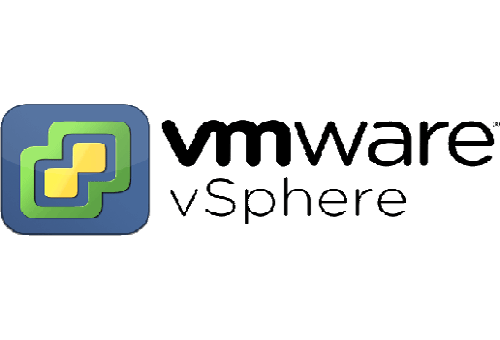Nagios is an open-source monitoring system that runs on the Linux operating system that monitors devices running Linux, Windows and Unix operating systems. Most companies run Nagios to monitor such things as memory usage, disk usage, microprocessor load, the number of currently running processes and log files. The monitoring of databases will, however, generally be ignored.
In this article we will show how to create and deploy Nagios monitoring for Netezza system components:
- workload
- database usage
- data slice capacity
- number of connected users
- number of database sessions
We will assume that Nagios server is already set up and running. In our laboratory system we are running a raspberry PI 4 with ESXi installed on it. The Nagios VM is installed on Ubuntu 20.04 LTS (long term support).
Step 1 – Install NRPE and plugins on Netezza host
N.B. monitoring utilities require installation of agents on monitored systems. Netezza has the same requirement. A difficulty may be that unless you are running CP4DS version 1.0.7.8/Hammerhead Netezza systems run RedHat 6 or below. With this in mind you will not be able to install packages using YUM.
For Stripers/Makos – follow this link.
For TwinFins – follow this link.
Download the following packages: (list is for RHEL 6):
nagios-common-4.4.3-3.el6.x86_64.rpm
nagios-plugins-2.3.3-1.el6.x86_64.rpm
nagios-plugins-apt-2.3.3-1.el6.x86_64.rpm
nagios-plugins-bdii-1.0.14-1.el6.x86_64.rpm
nagios-plugins-bonding-1.4-3.el6.x86_64.rpm
nagios-plugins-breeze-2.3.3-1.el6.x86_64.rpm
nagios-plugins-cluster-2.3.3-1.el6.x86_64.rpm
nagios-plugins-dhcp-2.3.3-1.el6.x86_64.rpm
nagios-plugins-dig-2.3.3-1.el6.x86_64.rpm
nagios-plugins-disk-2.3.3-1.el6.x86_64.rpm
nagios-plugins-dns-2.3.3-1.el6.x86_64.rpm
nagios-plugins-dummy-2.3.3-1.el6.x86_64.rpm
nagios-plugins-flexlm-2.3.3-1.el6.x86_64.rpm
nagios-plugins-hpjd-2.3.3-1.el6.x86_64.rpm
nagios-plugins-http-2.3.3-1.el6.x86_64.rpm
nagios-plugins-icmp-2.3.3-1.el6.x86_64.rpm
nagios-plugins-ide_smart-2.3.3-1.el6.x86_64.rpm
nagios-plugins-ircd-2.3.3-1.el6.x86_64.rpm
nagios-plugins-ldap-2.3.3-1.el6.x86_64.rpm
nagios-plugins-load-2.3.3-1.el6.x86_64.rpm
nagios-plugins-log-2.3.3-1.el6.x86_64.rpm
nagios-plugins-mailq-2.3.3-1.el6.x86_64.rpm
nagios-plugins-mrtg-2.3.3-1.el6.x86_64.rpm
nagios-plugins-perl-2.3.3-1.el6.x86_64.rpm
nagios-plugins-smtp-2.3.3-1.el6.x86_64.rpm
nagios-plugins-snmp-2.3.3-1.el6.x86_64.rpm
nagios-plugins-ssh-2.3.3-1.el6.x86_64.rpm
nagios-plugins-swap-2.3.3-1.el6.x86_64.rpm
nagios-plugins-time-2.3.3-1.el6.x86_64.rpm
nagios-plugins-ups-2.3.3-1.el6.x86_64.rpm
nagios-plugins-wave-2.3.3-1.el6.x86_64.rpm
nrpe-4.0.3-1.el6.x86_64.rpm
Upload to each host and install with:rpm -ivh *.rp
Resolve all dependencies (if any).
Step 2 – Edit NRPE configuration:
Create initial config of NRPE:
service nrpe start
service nrpe stop
To file/etc/nagios/nrpe.cfgadd following lines:
command[check_nzscratch]=/usr/lib64/nagios/plugins/check_disk -w 20% -c 10% -p /nzscratch
command[check_home]=/usr/lib64/nagios/plugins/check_disk -w 20% -c 10% -p /export/home
command[check_nz]=/usr/lib64/nagios/plugins/check_disk -w 20% -c 10% -p /nz
command[check_tmp]=/usr/lib64/nagios/plugins/check_disk -w 20% -c 10% -p /tmp
command[check_npsstate]=/usr/lib64/nagios/plugins/check_npsstate
Also – remember to modify permitted Nagios hosts only:
allowed_hosts=10.102.0.15,127.0.0.1
Create/usr/lib64/nagios/plugins/check_npsstatefile:
#!/bin/bas
state=$(sudo -i -u nz bash -c “nzstate -terse”
if (($state == “online”)); then
echo “OK – online”
exit 0
else
echo “UNKNOWN – $state”
exit 3
fi
Make file executable:
chmod +x /usr/lib64/nagios/plugins/check_npsstate
N.B. Nagios expects an exit code of OK or 0, otherwise it will report an error.
Because Nagios monitoring on the host is running as user ‘nrpe’, so test each of them assudo 'nrpe'– if any commands don’t work add the following lines to/etc/sudoers:
Defaults:nrpe !requiretty
nrpe ALL=(ALL) NOPASSWD: ALL
Alternatively, remove the commands that won’t run.
NOTE: If your IT security department won’t allow you to do this, restrict the commands you run to:
Start NRPE:
service nrpe start
On Nagios server check if NRPE is running:
root@nagios:~# /usr/lib/nagios/plugins/check_nrpe -H 10.102.0.73 -c check_npsstat
OK = online
3. Setup Nagios server:
The preferred method is to create a separate directory for all the custom scripts and utilities. Add following to/usr/local/nagios/etc/nagios.cfg :
cfg_dir=/usr/local/nagios/etc/NETEZZA
In this directory create all your monitoring scripts and add servers:
root@nagios:/usr/local/nagios/etc/NETEZZA# cat netezza_hosts.cfg | grep .
###
REMOTE HOST DEFINITION
###
define hostgroup {
hostgroup_name netezza
members NetezzaDev3MAJ
}
define host {
use netezza
host_name NetezzaDev3MAJ
alias NetezzaDev3MAJ
address 10.102.0.73
}
root@nagios:/usr/local/nagios/etc/NETEZZA# cat netezza_template.cfg
define host{
name netezza
notifications_enabled 1
event_handler_enabled 1
flap_detection_enabled 1
process_perf_data 1
retain_status_information 1
retain_nonstatus_information 1
check_command check-host-alive
check_interval 5
max_check_attempts 2
notification_interval 0
notification_period 24×7
notification_options d,u,r
register 0
}
root@nagios:/usr/local/nagios/etc/NETEZZA# cat netezza_service.cfg
###
Netezza disks usage definition
###
define command {
command_name check_nzscratch
command_line /usr/lib/nagios/plugins/check_nrpe -H $HOSTADDRESS$ -c check_nzscratch }
define command {
command_name check_nz
command_line /usr/lib/nagios/plugins/check_nrpe -H $HOSTADDRESS$ -c check_nz
}
define command {
command_name check_tmp
command_line /usr/lib/nagios/plugins/check_nrpe -H $HOSTADDRESS$ -c check_tmp
}
define command {
command_name check_npsstate
command_line /usr/lib/nagios/plugins/check_nrpe -H $HOSTADDRESS$ -c check_npsstate
}
define service {
hostgroup_name netezza
service_description check_nzscratch
check_command check_nzscratch
max_check_attempts 2
check_interval 2
retry_interval 2
check_period 24×7
check_freshness 1
notification_interval 2
notification_period 24×7
notifications_enabled 1
register 1
}
define service {
hostgroup_name netezza
service_description check_nz
check_command check_nz
max_check_attempts 2
check_interval 2
retry_interval 2
check_period 24×7
check_freshness 1
notification_interval 2
notification_period 24×7
notifications_enabled 1
register 1
}
define service {
hostgroup_name netezza
service_description check_tmp
check_command check_tmp
max_check_attempts 2
check_interval 2
retry_interval 2
check_period 24×7
check_freshness 1
notification_interval 2
notification_period 24×7
notifications_enabled 1
register 1
}
define service {
hostgroup_name netezza
service_description check_npsstate
check_command check_npsstate
max_check_attempts 2
check_interval 2
retry_interval 2
check_period 24×7
check_freshness 1
notification_interval 2
notification_period 24×7
notifications_enabled 1
register 1
}
Verify Nagios configuration: /usr/local/nagios/bin/nagios -v /usr/local/nagios/etc/nagios.cfg`
If no errors – restart Nagios: systemctl restart nagios
Now you have your database monitoring installed:

All that needs to be done now for development of custom monitoring is:
- On Netezza host add:
command[<CUSTOM_COMMAND_NAME>]=<PATH>/<SCRIPT_NAME>and restart NRPE (note that script needs to exist) - Write your script on Netezza host
<PATH>/<SCRIPT_NAME> - During testing – you need to run NRPE on remote machine to verify it working:
/usr/lib/nagios/plugins/check_nrpe -H <NETEZZA_HOST_IP> -c CUSTOM_COMMAND_NAME
I hope you find this useful – if you want any assistance with your Netezza problems why not reach out to us here.






